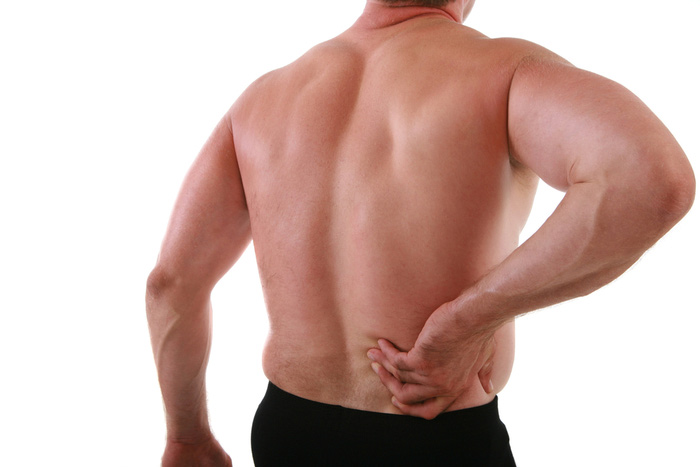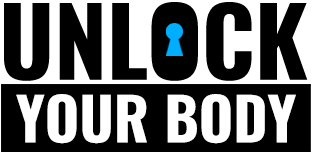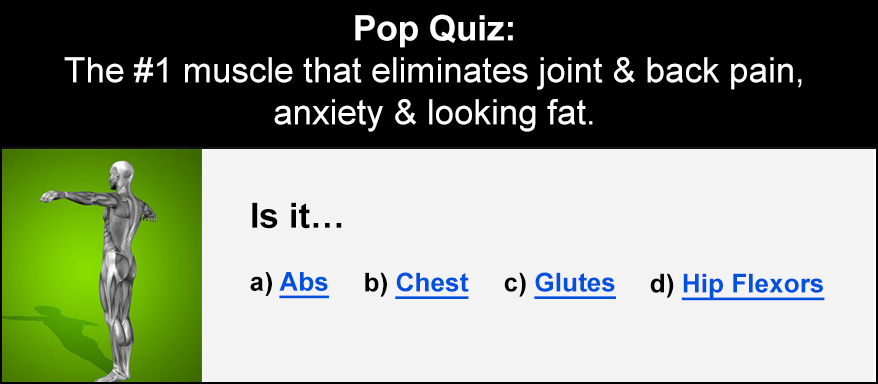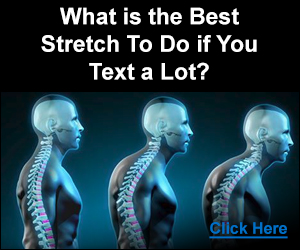
We all want to be as healthy as possible, but that often means dealing with poor health effectively.
Life is dangerous and injuries are a part of life, but they should be minimized. Today we’re going to be discussing some of the most common injuries associated with aging and everyday life that you should consider.
However, it’s not all doom and gloom! We’re also going to take you through the key preventative measures you can take to improve your wellbeing and reduce injury risk. These will all contribute to better injury-resilience as well as overall fitness and quality of life.
If you want to age-proof your body and minimize your injury risks, then read on. We’ll deal with some common problems as well as some general principles of best health!
Most Common Forms of Osteo-Related Injuries:
The “FOOSH”
The familiarly named FOOSH – fall on out-stretched hand – is a common problem as we grow older. Those falls that might have grazed you up while younger can pose serious risk to the wrist, elbow, and shoulders as you age.
This is a totally normal thing to experience, but a FOOSH can really damage your body and make everyday activities far more difficult. This is a concern as you lose muscle around these joints, the tendons/ligaments become more lax, and the bones themselves are more vulnerable to damage.
Breaks and Fractures
Fractures are common bone injuries that tend to happen in response to a fall or other event but can also develop due to repeated use. These latter kind, stress fractures, are a real problem for activity, sport, and exercise in later life. Not to mention stress fractures can be very painful!
Strengthening of the bones through proper diet and nutrition is one of the most important ways of combatting fracture risk. However, it’s also important to make sure you’re slowly progressing any of your exercise.
Adding too much volume to repetitive, impactful exercises like running can put you at risk. Sustainable exercise and activity progression is important to support bones for the long-term, so don’t rush yourself!
Debilitating Lower Back Pain
Lower back pain is the most commonly reported injury and health concern in the average person. In fact, 80% of all individuals will experience lower back pain at a debilitating level at some point in life. (1)
This is a huge factor in healthy, pain-free aging and it is a condition you can influence. The main causes of lower back pain are muscular and postural, as well as some events that can cause lifelong spirals.
What we look for is proper development and control of the muscles around the spine and hips. This is adjusted by better strength in the area, continued intentional activity in the lower back/hip area, and being conscious of how much loading/impact you’re putting on your spine.

Tennis Elbow
The tennis elbow isn’t just for tennis players, as you’ll find out if you struggle with this condition.
It’s an over-aggravation of the tendons in the elbow, usually due to tightness and repetitive movement in the region. This is often best served with rest, stretching of the chest, shoulder, and bicep, and plenty of slow, controlled rehabilitation exercise.
However, it’s also possible to aggravate the bones and cartilage of the joint. As a result, proper strength training of the joint alongside nutrition choices can combat tennis elbow. (2) This will require consistent relief through stretching and mobility work, however, to ensure best results.
Meniscal Tears/ Damage
The menisci are C-shaped disks of connective tissue that sit either side of the knee joint. Their main role is to absorb force during activities like running, jumping, etc. However, they can easily become damaged through unusual or exceptionally forceful movement.
A tear in the meniscus is a significant problem that needs to be addressed in steps: (3)
First, it’s important to cease any exercise that caused the tear or aggravates it/causes pain. These are likely to include heavy loaded knee-bending like sprinting or weight training. This could also be high-repetition movements like running, however, where impact is high and common.
Second, you need to address the issues in movement that might underlie the problem. Everything from ankle strength/mobility, the strength and flexibility around the knee, hjp control, and core all impact on knee-loading.
We recommend finding your problem (with proper medical guidance) and working to fix the cause, not just the symptom. If you don’t address these foundational problems, you’re more likely to re-injure yourself in future.
The third step is to address weakness and imbalance with good strength training that is slow, progressive, and appropriate. This usually means starting with isometric holds, developing through lightly-loaded movements, and accumulating lots of high-quality, controlled exercise with light but progressive resistance.
Patience and focusing on sustainable change are the keys to dealing with a meniscal tear, as well as other injuries we’ve discussed. This cannot be overstated, as rushing back to intense exercise and activity can aggravate injuries. It’s better to take the process a little slower to ensure you only have to do it once!
Meniscal tears are notoriously difficult and annoying but, like other common injuries, they can be dealt with using a combination of structural and Proprioceptive changes. These are the important preventative measures that are going to improve injury-resilience across your whole body…

Structural Change
You can prevent – or resist – some of these common injuries by changing the structure of your body. These changes come in the shape of better bone, muscle, and connective tissue resilience/health.
These changes are passive: once you’ve achieved them, they don’t require more input to preserve your health. They are slow to build, but they provide a significant long-term benefits and are equally slow to leave.
This is the kind of preparation that your body benefits from for the rest of your life. Clearly, that’s a great investment from as little as a few hours a week of training and proper eating!
Pliability: Flexibility and Ductility
Muscles place demands on the joints they’re associated with. That’s kinda how they work – they pull joints to make you move. There’s no problem with this.
Problems do arise, however, when your resting demand from muscles on joints is too high. This is also compounded by issues like the thickening and resting ductility of fascia getting too high (gunking up your muscles/joints slightly).
These problems are associated with what we call flexibility. It’s often discussed really badly, but the simple point is this: excessive resting demands of muscles on joints is a simple way to increase the risk of low-level injuries and long-term aggravation like tennis elbow.
Poor pliability of muscles around joints are a single factor in the risk of injury, but they’re significant. Reducing the demand of muscles on joints, making sure both sides of a joint are equal, and getting strong at all muscle-lengths is important for reducing injury risk.
You can do this in a few ways:
1. Stretching and mobility: traditional movement through a full range of motion often (not just every so often) can improve mobility and reduce injury risk.
2. Active movement control: yoga and Pilates are both good examples of conscious movement through challenging ranges. These types of controlled stretches are more effective and provide a significant movement-quality benefit if done properly!
3. Weighted stretching: control is a key factor in better flexibility and injury-resilience. Add a small amount of weight, that you can control, like in the weighted shoulder dislocate (when you can do the normal kind comfortably!).
4. Long-range weight training: get strong through the whole movement. This improves neural control, strengthens tendons more effectively, and reduces “risky positions” in your movement and health.
Stronger Bones
Bone health and strength comes from mineral density and structural adaptations.
Basically, this means eating the right diet to support overall mineral uptake, while performing the right kinds of training to improve the strength of bones.
From a nutrition perspective, this means high protein, calcium, and vitamin D intake. These are the key compounds associated with the strength of bones and their formation. Calcium and proteins make up the majority of bone structures, while vitamin D is key to making sure your body uses them properly.
Both strength training and aerobic exercise provide stimuli for improving bone density. (4) However, they are best when combined, so we recommend getting at least a little of both. This is also useful since they both improve muscular quality (though strength training most effectively (and cardiovascular health (though cardio is superior for this).

Stronger Muscles
Stronger muscles provide the support system for bones and joints. They also absorb shock, support proper posture, and align joints effectively. (5)
This means that strength in the muscles is a key factor in injury-prevention, and you need to pay it some attention.
Nutritionally, stronger muscles require a heavy intake of protein and carbohydrates, alongside an adequate calorie intake. Underfeeding on any of these is a bad idea, and you should be consuming around 0.6-1g of protein per pound of bodyweight (6), alongside 2-3g of carbs per pound of bodyweight.
These are great for supporting muscle repair and growth processes. These need to be combined with strength training, however, to produce the most important and enduring muscular changes. This ensures proper muscle gains, as well as preparing the joints and carrying over to bone density.
Regular strength training with good technique, 3 times a week focusing on compound movements and single-leg training, can make a serious difference. This should include plenty of core and buttock strengthening, too, since these influence all your movement mechanics!
Proprioceptive Change
These changes aren’t structural specifically, but they’re the result of how you move and developing better conscious and subconscious control of your body. It’s an amazing thing to learn to move better without thinking about it!
Better Proprioception and Balance
Proprioception is the internal sense of body-awareness you have. It’s how you know where body parts are when your eyes are closed, and it’s widely described as the 6th sense (even if it is similar to touch).
Practicing movement with and without weight is a key method for improving this sense. (7) This is important because proprioception is a key factor in reducing the risk of things like falls – as a key part of balance.
The better your proprioception, the better your balance, posture, and exercise quality can all be. It’s the fundamental skill you’ll need to better develop resilience. Many athletes report far less actual falls after they began training, and this is a consistent trend in trained older adults.
Simply put, knowing your body better means moving better and getting injured less!

Improved Familiarity With Force: Applying AND Absorbing
Getting good with force is one of the overlaps between structural and proprioceptive change.
As you work through resistance exercise, or even cardio, you’ll develop better familiarity with force. This is important because producing and absorbing force both contribute to better long-term injury resilience.
Force is perhaps the biggest player in injury risk and wear/tear. Exercise that involves both producing and absorbing force (like jumps, running, and similar movements) all train these skills.
With landing mechanics being one of the key players in ankle/knee/hip/back injuries, training for better force-production and -absorption are a real benefit for long-term health. Some great choices include bunny hops, box jumps (at whatever height is comfortable for you), and even step ups.
Posture and Conscious Movement Benefits
We’ve mentioned conscious movement before, but it’s also about conscious posture. Body awareness and proprioception are great when you apply them to your everyday positioning.
After all, the positions you put your body in for posture are reinforced hours and hours every single day. Good posture is a great way of relieving compression in the spine, keeping joints balanced, and reinforcing good joint/muscle health.
Posture isn’t the be-all and end-all of good health, but it does maintain it. Your posture also benefits from proprioception and can prevent problems like tension headaches and other spinal discomfort.
Moving in a way that is conscious of joint alignment is one of the best benefits of exercise and stretching like yoga. If you’ve never really thought about how your joints should align, proper instruction can bring you to better consciousness of these things and improving them is a great way to stay healthy.
You’re not at the whim of your body – you’re in control of it! There are some very common and very unpleasant injuries associated with poor structural and Proprioceptive preparation. However, the preparation itself is in your hands and you can build a more resilient body that will stand the test of time. This is a relatively simple process of proper training and a conscious approach to eating that involves plenty of proteins, vitamins, and minerals.
Taking steps to prepare your body is an amazingly rewarding process that is far less difficult and time-intensive than you might think. Put time and effort into your body and it will reward you with better quality of life and longevity!
References:
(1) https://www.ninds.nih.gov/Disorders/Patient-Caregiver-Education/Fact-Sheets/Low-Back-Pain-Fact-Sheet
(2) https://www.tandfonline.com/doi/abs/10.1080/00913847.1981.11711096
(3) https://www.healio.com/orthopedics/journals/ortho/1994-5-17-5/%7B7367966a-68f8-46c8-944f-2432c95eaf28%7D/rehabilitation-after-meniscus-repair
(4) https://www.physiology.org/doi/abs/10.1152/jappl.1993.74.5.2478
(5)https://journals.lww.com/nursingresearchonline/Abstract/1996/03000/Effects_of_Muscle_Strength_Training_on_the.2.aspx
(6) https://examine.com/nutrition/how-much-protein-do-you-need/
(7) https://www.ncbi.nlm.nih.gov/pmc/articles/PMC1320579/







